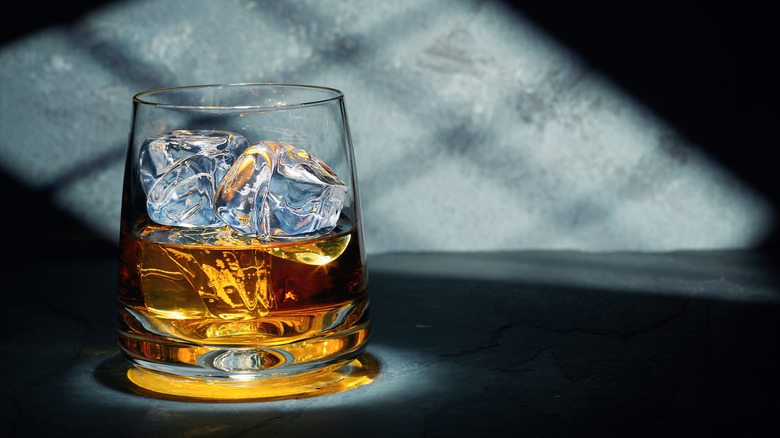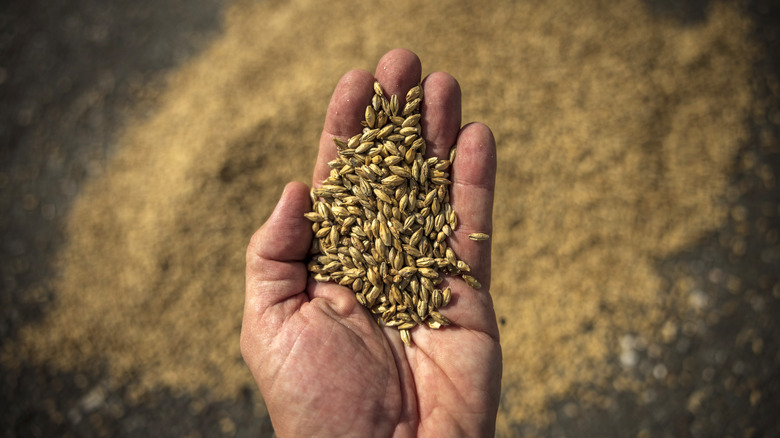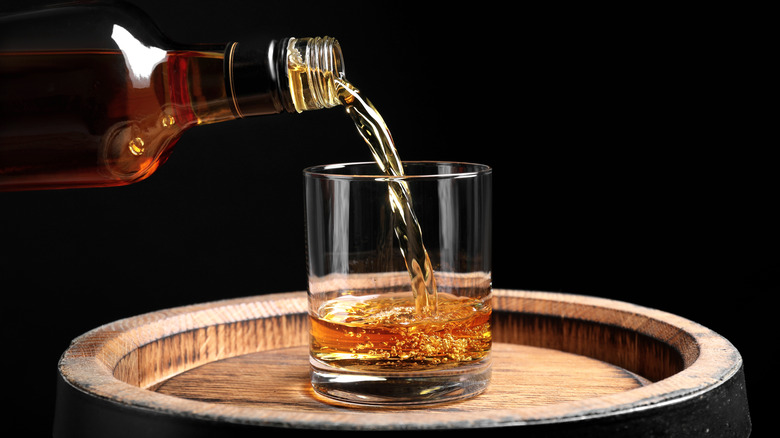What Is American Single Malt Whiskey?
If you're familiar with whiskey, you've likely noticed a frequent precursor on its bottle: "American single malt." Right now, American single malt is a whiskey trend that's gained more and more traction, but what, exactly, does the label mean?
To understand the intricacies of the term, take a step back and look at Scotland, which popularized the term single malt in the context of single malt Scotch whisky. In Scotland, a single malt whisky is distilled from 100% malted barley. There are also limitations on the kinds of equipment and age minimums that go into making the Scotch.
As for how that Scottish tradition translates to America's single malt whiskey, Mark McLaughlin, co-founder of Old Line Spirits, told Tasting Table, "We've taken what we feel are the most important elements of the Scotch definition to us as a category and applied it to what we want [American single malt] to be."
McLaughlin pointed out, however, that American single malt whiskey is not seeking to recreate Scotch. Rather, American single malt also follows U.S. whiskey stipulations that classify it accordingly.
American single malt whiskey shares some similarities with Scotch
While American single malt whiskey isn't looking to recreate Scotch, it does share some similarities and also has some important differences. Just like single malt Scotch, America's single malt whiskey must be made with 100% malted barley. American single malt whiskey must be distilled in the United States much the way single malt Scotch must be distilled in Scotland. There are differences in their requirements, however. While both single malt Scotch and American single malt whiskey are aged in oak, Scotches are typically aged in previously-used oak casks, whereas American single malt whiskeys can be aged in virgin oak barrels. There's also no minimum age requirement for American single malt whiskey. Meanwhile, single malt Scotch must be aged for a minimum of three years.
Such points of comparison and contrast between the drinks pay homage to tradition, while simultaneously allowing American single malts to forge their own path. "It's a way of taking a whiskey made with that really rich, flavorful grain of malted barley, but not trying to beat the Scots at their own game," said Mark McLaughlin, "because they've been doing it for hundreds of years and they do it incredibly well.
If it seems like the American qualifications are both broad and relaxed, it may be because the category of American single malts, technically, doesn't exist, but is well on its way.
American single malt is en route to becoming an official category
While American single malt whiskey is spreading quickly, it lacks an official designation. For context, whiskeys sold and produced in the United States fall under a category from the Alcohol Tobacco Tax and Trade Bureau (TTB). In 2022, the TTB added American single malt to its rulebook with proposed proposed standards for the drink. These proposed standards outline the classifications distillers must fulfill for their whiskeys to be designated official American single malts.
Yet while the proposed standards have been in the works for quite some time, they haven't yet come to fruition as an official designation. According to Mark McLaughlin, the category could be recognized any day now. "It could be tomorrow; it could be a year and a half from now," he said.
Despite the waiting period, the designation of American single malt whiskey seems imminent. To pass the time, why not pour yourself a glass of American single malt whiskey, as it were — whether you prefer it neat or on the rocks – and cheers to the burgeoning category?


